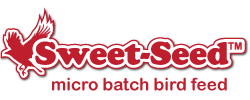What Is "Real" Hummingbird Nectar Made Of Anyway?

Hummingbirds can't get enough nectar – not only do they visit hundreds of flowers every day, but they often guard their favorite feeders and chase away any competition. But can sugary sips of nectar really provide balanced nutrition for hummingbirds? Real, natural nectar is far more than just sugar and water, and understanding the composition of nectar can help backyard birders offer better foods and a balanced diet for their hummingbirds.
Natural Nectar
There is as much variety in natural nectar as there is in the flowers that produce it. The exact composition of nectar will vary depending on the flower species, plant maturity, time of day, soil composition, moisture levels and climate, and even two blooms on the same plant may not have chemically identical nectars. Different flowering plants have evolved different types of nectar to entice specific pollinators to their blooms, and plants are continually evolving their nectar recipes to better suit their pollination and reproductive needs.
Natural flower nectar has several key components. Water and sugar are the main ingredients, and the sugar is primarily sucrose (which, when refined, is plain white table sugar). Fructose and glucose sugars are also smaller components of nectar, along with small amounts of a wide range of other compounds, including…
- Amino acids
- Lipids
- Antioxidants
- Proteins
- Calcium and other trace minerals
- Phosphates
- Alkaloids
- Aromatic compounds for scents
When hummingbirds drink nectar, they consume all these ingredients as part of a balanced, nutritious diet. The one thing nectar lacks, however, is dyes or colors – natural nectar is clear, and it is only the floral blooms that are brightly colored. While hummingbirds associate particular colors with rich food sources, the nectar itself is not dyed to entice the birds, and artificial nectar in feeders should not be dyed either.
What Else Hummingbirds Eat
While hummingbirds get more than just sugar and water each time they sip from a flower, a diet of nothing but nectar is not suitable for proper growth, feather molting or bodily functions. Hummingbirds eat much more than nectar, however. Other parts of their diet include…
- Insects nabbed in the air or plucked from spider webs or flowers
- Sap from tree wounds or holes drilled by woodpeckers
- Pollen from nectar-bearing flowers
- Salts that may be picked up from sand or mineral deposits
- Fruit juice sipped from exposed fruit flesh on trees or at fruit feeders
In fact, hummingbirds often consume hundreds of insects in a day, and other food sources are regular parts of their diet. These tiny birds have hearty appetites and are foraging throughout the day, constantly visiting not only flowers for sugary drinks, but also looking for other plentiful foods.
Providing a Balanced Hummingbird Diet
It's easy to think that a clean, fresh hummingbird feeder meets these birds' dietary needs in the backyard, but it is important to offer more than just artificial nectar for hummingbirds. Minimizing insecticide use in the yard ensures an abundant source of gnats and other tiny insects hummingbirds eat, and planting nectar-producing flowers will ensure plentiful natural nectar with trace compounds essential to hummingbird health. An overall bird-friendly backyard is best for hummingbirds, and they will make great use of all the tasty resources such a yard offers for their feeding pleasure.
Image by Theo Dawson from Pixabay
